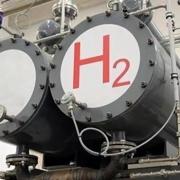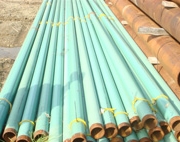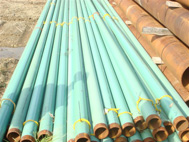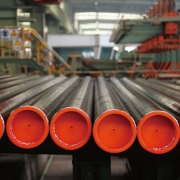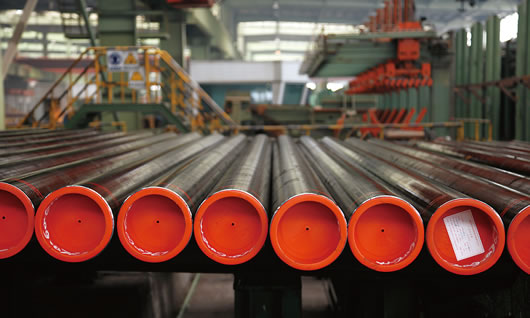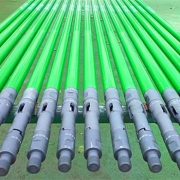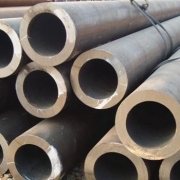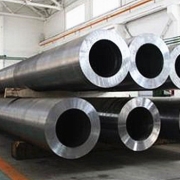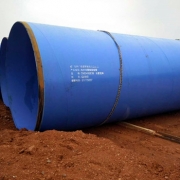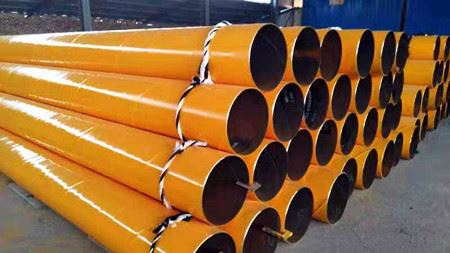SSC VS HIC Tests
Sulfide stress cracking (SSC) is a form of hydrogen embrittlement cracking. Sulfide stress cracking occurs in low alloy steel pipeline, high-strength steels, weld joints, and welding heat-affected zones (HAZs) subjected to tensile stress in acidic environments and temperatures below 82°C (180°F), depending on the composition, microstructure, strength, residual stress, and external stress of the steel.
The steel plate samples were immersed in an acidic aqueous solution containing H2S, and the anti-SSCC performance data were obtained by applying an appropriate incremental load. According to the standard NACE TM0177-2016, the specific requirements are as follows: take a group of forged steel plate sample σb or Hb to be the highest, carry out anti-sulfide stress cracking test, and the stress σTh ≥247MPa to be qualified. A group of samples from class A, B and D welded joint samples were taken for sulfide stress cracking test, and the stress σTh ≥247MPa was considered qualified.
Hydrogen induced cracking (HIC) is a kind of internal cracks with stepped characteristics formed by the interconnection of parallel hydrogen layer cracks, which have no obvious interaction with external stress or residual stress. At the bubbling part, hydrogen cracking is aggravated by the stress generated by hydrogen accumulation inside. HIC is closely related to the cleanliness of steel, as well as the manufacturing method of steel, the presence of impurities and their shape.
HIC occurs in thin and heterogeneous sulfide or oxide inclusions occurring parallel to the rolling direction of the steel plate. These inclusions form sites that form microscopic hydrogen bubbles and eventually grow together through step-like fractures. Since HIC is not stress-dependent and does not occur with hardened microstructure, post-weld heat treatment is not meaningful. The resistance to hydrogen cracking can only be achieved by limiting trace element sulfur and controlling the manufacturing variables of steel.
SSC and HIC tests are based on the NACE international test standard recommended by the American Society of Corrosion Engineers. Constant load stress corrosion test and three-point bending test were mainly used for SSC test, mainly according to NACE TM0177, and NACE TM0284 was mainly used for HIC test. The materials used in the design and manufacture of the elastic design criteria may be selected from those already qualified in ISO 15156-2 and ISO15156-3 or NACE_MR0175 standards, which have specified environmental conditions to avoid stress corrosion. The materials should be selected only if they meet this limitation.
Conditions for exemption from SSC and HIC tests for carbon steel, low alloy steel and cast iron
1. Materials shall be delivered in the following conditions:
Hot rolling (carbon steel only)/annealing/normalizing/normalizing + tempering/normalizing, Austenitizing, quenching + tempering/Austenitizing, quenching + tempering
2. Material hardness is not more than 22HRC, and nickel content is less than 1.0%;
S 0.003% or less, P 0.010% or less;
The hardness of weld and heat affected zone shall not exceed 22HRC.
3. The yield strength of the material is less than 355Mpa and the tensile strength is less than 630Mpa
4. Carbon equivalent limit:
Low carbon steel and carbon manganese steel: Ce ≤0.43 Ce =C+Mn/6
Low alloy steel: Ce ≤045 Ce =C+Mn/6+(Cr+Mo+V)/5+(Ni+Cu)/15
Conditions for exemption from SSC and HIC tests for stainless steel
| C | Cr | Ni | P | S | Mn | Si |
| ≤0.08 | ≥16.00 | ≥8.00 | ≤0.045 | ≤0.04 | ≤2.0 | ≤2.0 |
- The content of 321 stainless steel with higher carbon content allowed to contain other elements is acceptable within the corresponding technical range.
2. Should be solution annealing and quenching, or annealing heating stabilized heat treatment conditions;
3. It is not allowed to improve mechanical properties through cold working;
4. The hardness of raw materials, welds and heat affected zone shall not exceed 22HRC.
| Alloy UNS.No | Temperature, max | Pressure H₂S, kpa(psi) | Chloride ion concentration(mg/l) | Ph | Sulphate resisting |
| S31600 | 93(200) | 10.2(1.5) | 5000 | ≥5.0 | No |
| S31603 | 149(300) | 10.2(1.5) | 1000 | ≥4.0 | No |
| S20910 | 66(150) | 100(15) | / | / | No |

